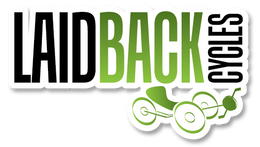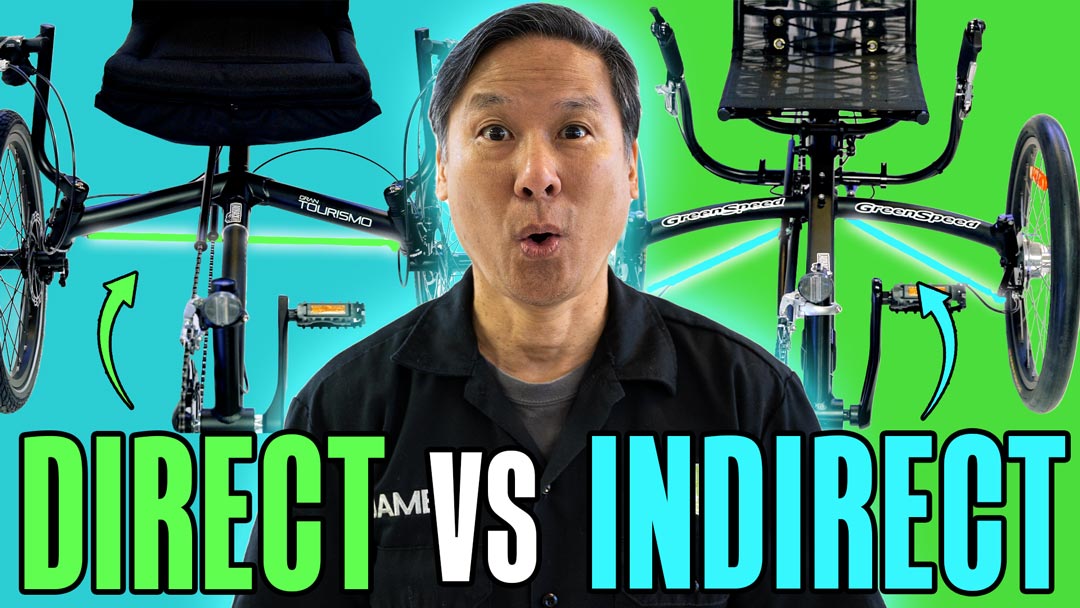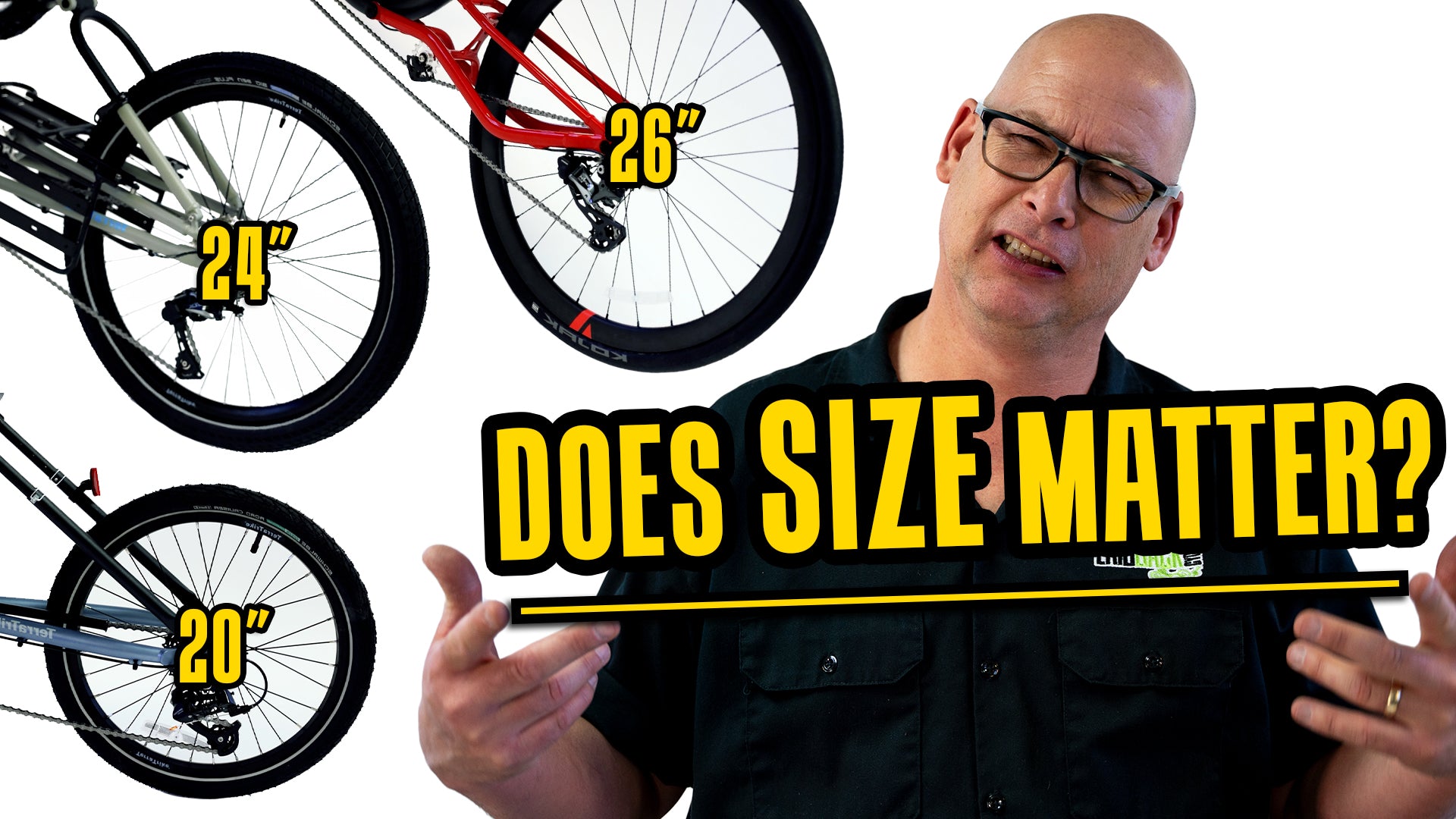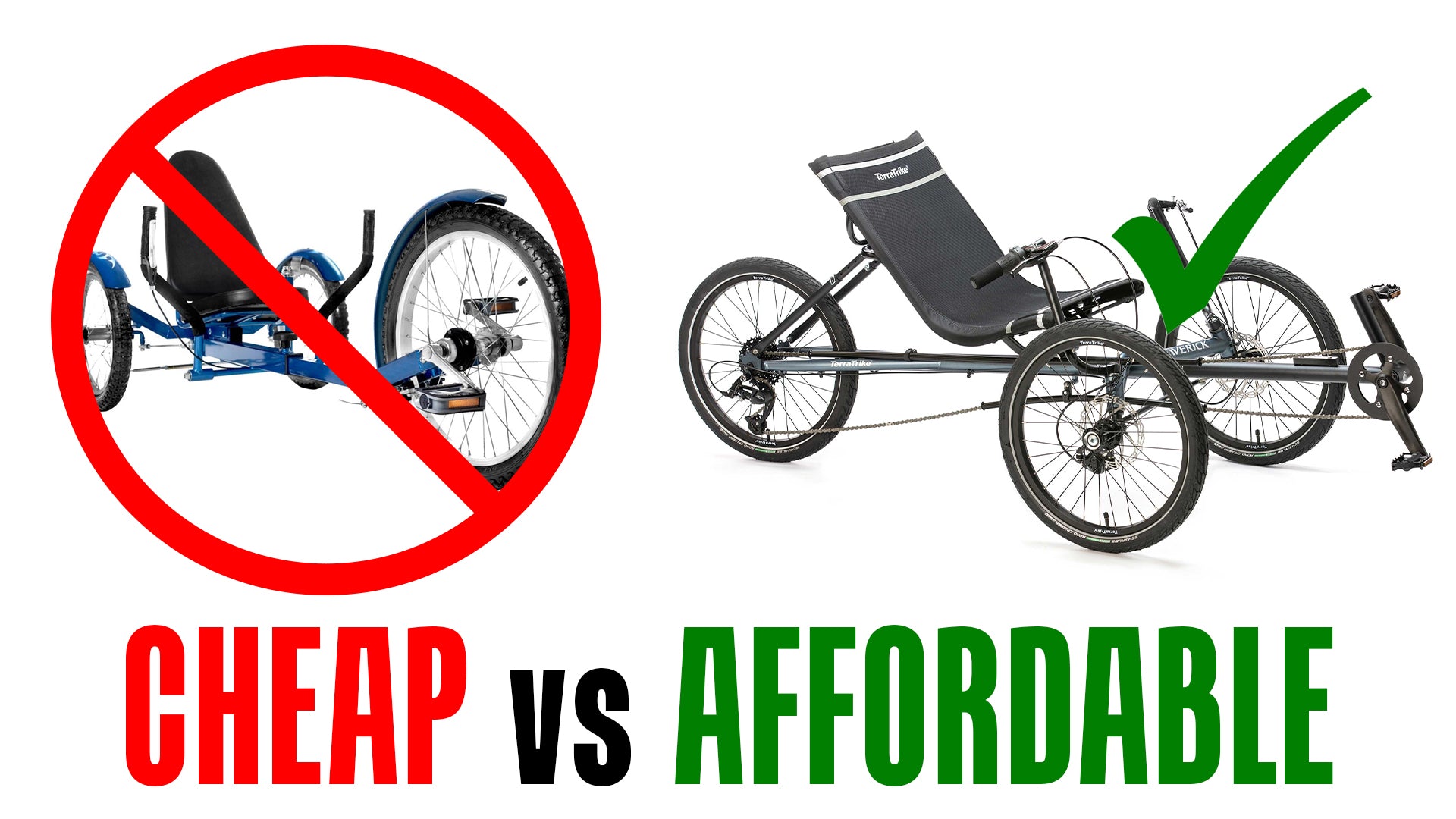Direct vs Indirect Steering
We often have customers ask if they should go with direct or indirect steering for their recumbent trike. There really isn’t an easy answer, as it all depends on personal preference. One is not better than the other, and instead, you want to see which feels right for you. How one rides versus the other depends a lot on the overall design.
There are a lot of design decisions that will affect the feel, including the design of the handlebars, the angle of the head tubes on both systems, and the engineer’s vision when they designed the overall trike. Here we look at direct versus indirect steering to “steer” you in the right direction for your trike purchase.
What is Indirect Steering?
Indirect steering essentially puts the steering on a bearing underneath the seat and operates two tire rods. A plate is attached to the axis, which turns when the handlebars turn. Because of the way it's levered, it takes a lot less energy to move. Although you might find the initial movement is less, as you turn, it turns the wheel more. This can give you a little bit more stability when you're going really fast.
It also gives you a great turn radius which is perfect when you're on a single-lane bike path. However, if you love the rougher paths, you might feel less connected to the road and therefore not as much in control as you’d like. We find Greenspeed has one of the best steering systems out there. You can easily steer with one hand, and you aren’t likely to find it feels jittery at all. When you turn, it has a natural progressive feeling that you’ll appreciate.
Pros of Indirect Steering
When looking at the advantages of indirect steering, it’s all about enjoying less wheel vibration through the handlebars, which many riders find more comfortable. As well, if you tend to ride rougher trails, the indirect steering linkage absorbs some of that bounce you experience on uneven paths. When you combine indirect steering with front suspension, you can tame those rough roads and enjoy a better ride. Indirect steering also takes those turns nice and smooth, so you might feel safer.
Cons of Indirect Steering
Now on the less positive side of things, indirect steering can make you feel disconnected from the road, which can be a little disorienting if you like to go fast. Some people find this feels like they have less control, so if speed’s your thing, you might not like indirect steering as much. Keep in mind many people just need time to get used to how indirect steering feels at high speeds. If you ride a lot, the complex design of indirect steering can become harder to maintain, such as toe-in adjustments that are more complicated.
What is Direct Steering?
Direct steering has handlebars connected directly to the wheels. This has several advantages because, like a sports car, you enjoy the feeling of being directly connected to the road. You actually feel everything, allowing you to correct when you hit little bumps or divots on the path.
As a result, your reaction time is better because you have more input. That said, some riders might find this unpleasant, especially at higher speeds where everything becomes more pronounced. Direct steering is a simpler system run through a single tie rod. For example, the Gran Tourismo’s direct steering is very well-planted. You can feel the road, and you’ll have total control over it. You can move with little effort, even using one hand.
Pros of Direct Steering
The main advantage of direct steering is you enjoy a better road feel. This is especially appreciated when you hit higher speeds. You’ll also find because it has a simpler design, maintenance is a lot easier than indirect steering, including adjusting toe-in.
Cons of Direct Steering
You’ll definitely notice more wheel vibration on rough roads, so you’ll need to keep your hands and arms relaxed to avoid getting jarred when you hit bumps.
Which is Better: Direct or Indirect Steering?
So, that still leaves us with the question, which is better indirect or direct steering? And it still leaves us with the same answer: it depends on what one feels the best for you. To help determine which side of the fence you probably sit on, here’s a look at the ride experience:
Indirect Ride: If you travel fast, on smoother terrain and want to put less effort into steering, you might find indirect steering feels better. Also, if you tend to travel on smooth, single-lane paths, you’ll have less worry about those tight turns. You’ll enjoy less wheel vibration through the handlebars, and the trike will absorb more bounce when on rougher terrain for a smoother ride. As long as you don’t long to feel that true connection to the road and aren’t turned off by the fact the indirect steering trike is higher maintenance, this could be a good place to start.
Direct Ride: If you live for a good road feel, high speeds and less predictable trails, the direct ride might feel better for you. You’ll always have that connection to the road, so feel you have more control. You’ll also enjoy the added benefit of easier maintenance. Just keep in mind this can also translate into a bumpier ride that can feel a little jarring.
When it comes right down to it, you might not really notice much difference between the two types of steering. Where you will find the difference, or more aptly feel the difference is in the ride experience itself. You have to consider the trike as a whole, as opposed to the individual features and components. Triking is all about the experience, so you want to choose a model that makes you feel comfortable on the types of trails you tend to travel.
If you are ready to take some trikes out for a test drive, the team at Laid Back Cycles is ready to help. We can discuss your preferred ride, physical ability and even things like storage so we can recommend the best models to take out for a spin.
Video Transcript
Hi, this is James, Master Trike technician at Laid Back Cycles. Today we are going over direct steering versus indirect steering. Which one is better? Okay, I got you there. One is not really better than the other, they are just different. Indirect steering essentially puts the steering on a bearing underneath the seat and operates two tire rods. Because of the way it's levered it takes a lot less energy to move. Also, the wheels can be engineered because of how they have the tire rods. The initial movement is less but as you turn, it turns the wheel more. This can give you a little bit more stability when you're going really fast; and also gives you a really good turn radius for when you're on a bike path and you have a single lane.
Now direct steering also has this advantage. As its name implies the handlebars are directly connected to the wheels. This has several advantages because like a sports car you are directly connected to the road. You actually feel everything, and you can correct when you have those little bumps or little divots inside of the road. You can react to it a little bit more because there's more input to the driver of the trike. It's a simpler system run through us a single tie rod. How it rides versus the indirect depends a lot on the frame designs and the steering designs. A whole bunch of things will affect the feel. The design of the handlebars, the angle of the head tubes on both systems, and what the engineer was thinking when they designed the overall trike. So, we're going to take these things outside and show you a little bit about the differences.
The direct steering is very well planted. You can feel the road, you have total control over it, and the ability to move it is actually not that hard. You can do it with one hand pretty easily. This system on this Gran Tourismo is perfect. The Greenspeed, especially the GT20, has one of the best steering systems out there. One hand is real easy and it's not jittery in any sense. And when you turn it has a natural progressive feeling. This thing is great.
So, we just got back from our ride over here and as you can see, in actual practice, there's not a whole lot of difference between the two different types of steering. There is a difference in feel though; so you might prefer one or the other. But again the trike is more important than the steering. You should be able to feel comfortable in it before you even get to that point. And then from there if you have two trikes that you like and one happens to be direct steering and one is indirect, pick the one you're most comfortable with. But if you want to know more about the subject you should check out this next video.





